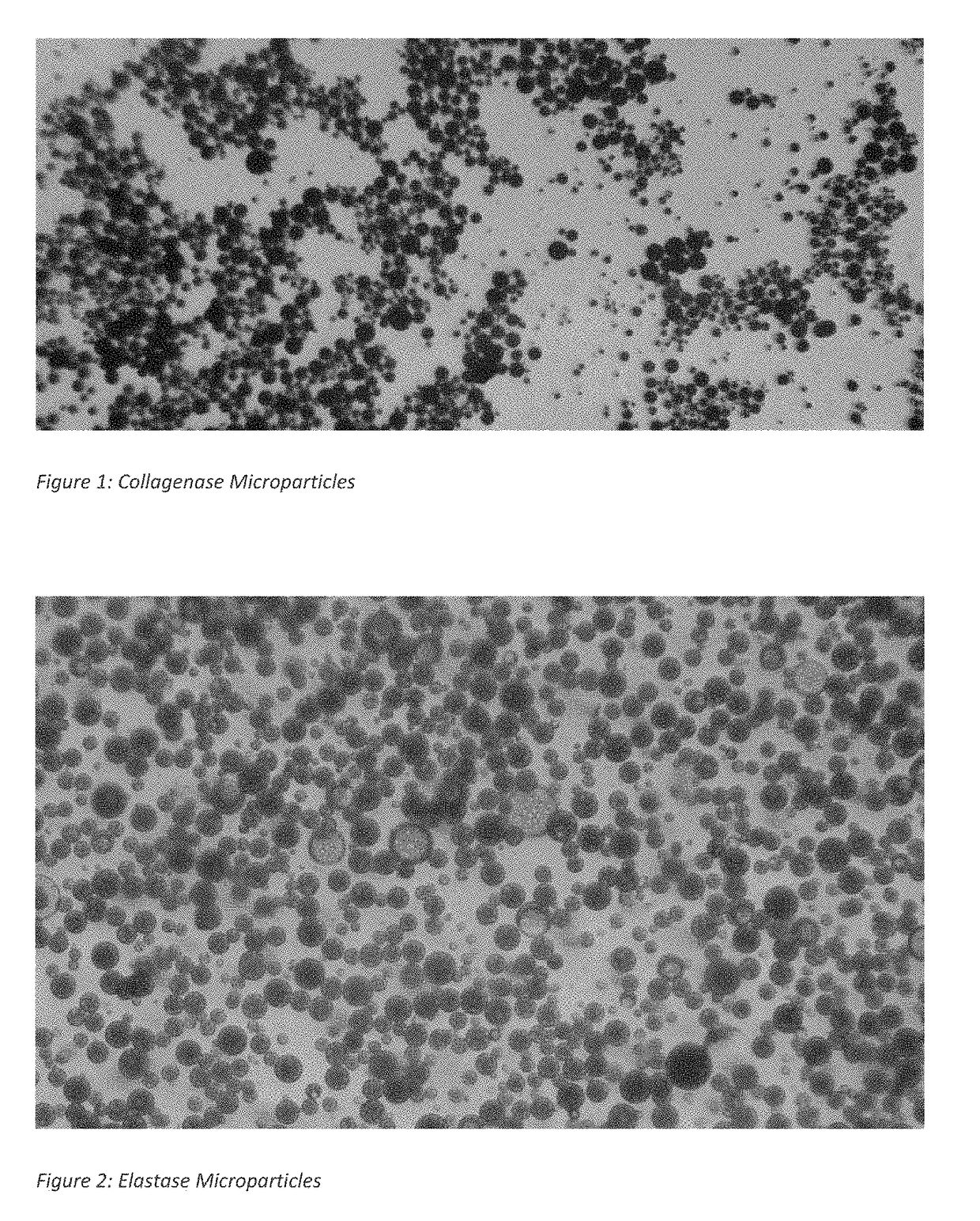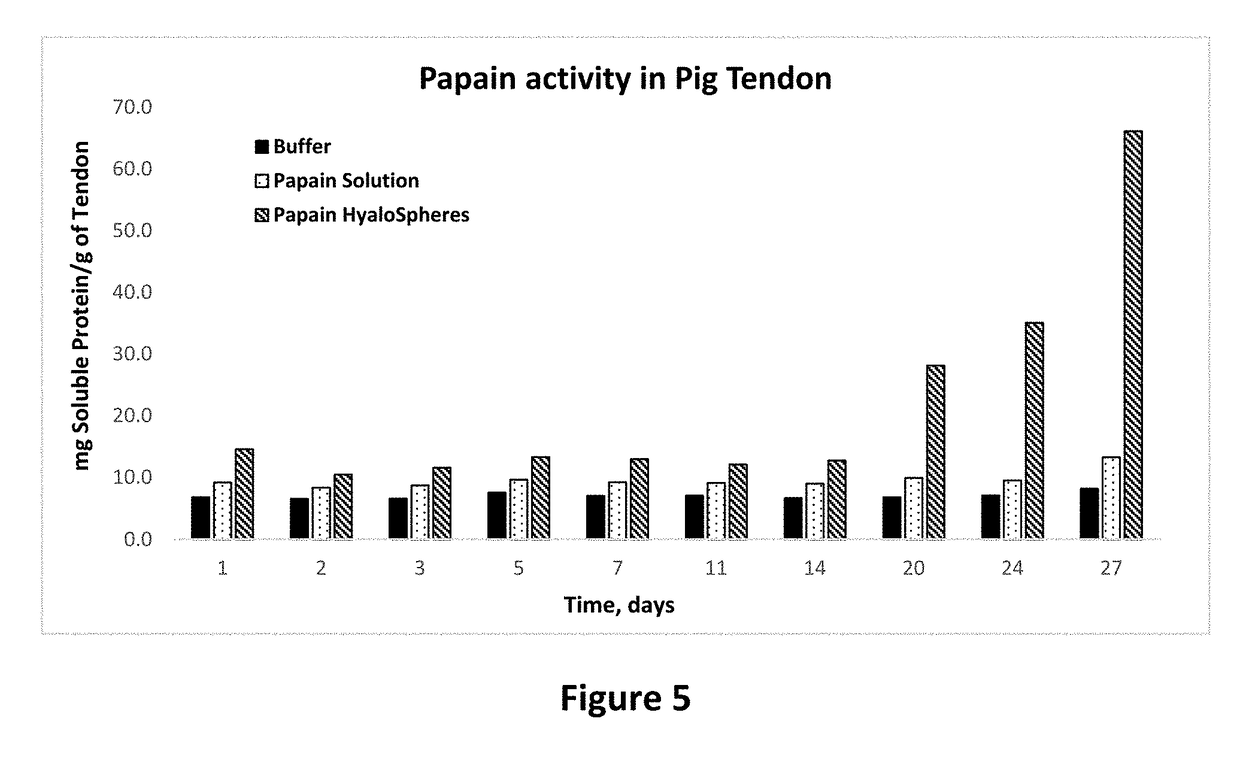Composition and method of preparation of protease microparticulate slow release preparation
a technology of protease microparticulate and slow release, which is applied in the direction of drug composition, peptide/protein ingredients, dermatological disorders, etc., can solve the problems of high incidence of recurrence of keloids, limited information on exact cause of scarring, and unpredictable scar formation after surgical procedures or injuries
- Summary
- Abstract
- Description
- Claims
- Application Information
AI Technical Summary
Benefits of technology
Problems solved by technology
Method used
Image
Examples
example 1
Preparation of Collagenase Microparticles
[0048]0.5 gram of polylactic co-glycolic acid polymer (called 1A) with an average molecular weight of about 10 kilo Dalton and which consisted of a 50:50 mixture of lactic acid and glycolic acid monomers is dissolved in 10 milliliters of dichloromethane. In a separate vessel, 20 milligrams of collagenase powder is added to 0.5 milliliter of purified water to obtain a clear solution. This solution is filtered through a 0.2 micron filter to remove any insoluble material. 0.4 milliliters of the filtered protease solution is added to the polymer solution. This mixture is vortexed at a high rate for 60 seconds to disperse the protease solution in the polymer solution. The dispersion is sonicated using a 3 mm sonication tip at 40% amplitude for 60 seconds to prepare a fine emulsion containing the protease solution emulsified in the polymer solution. This first emulsion is added to 40 milliliters of a 2% solution of polyvinyl alcohol (PVA) in water....
example 2
Preparation of Papain and Elastase Microparticles
[0050]Papain and elastase microparticles were made following the process of example 1 except that 10 mg each of these enzymes was added to purified water followed by stirring at 37° C. for one hour. This mixture was filtered through a 0.2 micron syringe filter to remove undissolved enzyme. The filtered solution was used to prepare the microparticles as described in example 1 starting with the vortexing step.
[0051]The processes of this example were repeated two further times to provide Compositions 6 and 8 for papain and Compositions 10 and 12 for elastase mentioned in Table 1 below.
example 3
[0052]Collagenase, papain and elastase microparticles were made following the processes of Examples 1 and 2, except that the polylactic co-glycolic acid polymer is listed as grade 3A and has an average molecular weight of about 25 kilo Dalton. The compositions are identified below in Table 1 as Composition Numbers 2, 5 and 9 respectively. See FIGS. 2 and 3
PUM
| Property | Measurement | Unit |
|---|---|---|
| cross-sectional diameter | aaaaa | aaaaa |
| cross-sectional diameter | aaaaa | aaaaa |
| diameter | aaaaa | aaaaa |
Abstract
Description
Claims
Application Information
 Login to View More
Login to View More - Generate Ideas
- Intellectual Property
- Life Sciences
- Materials
- Tech Scout
- Unparalleled Data Quality
- Higher Quality Content
- 60% Fewer Hallucinations
Browse by: Latest US Patents, China's latest patents, Technical Efficacy Thesaurus, Application Domain, Technology Topic, Popular Technical Reports.
© 2025 PatSnap. All rights reserved.Legal|Privacy policy|Modern Slavery Act Transparency Statement|Sitemap|About US| Contact US: help@patsnap.com



